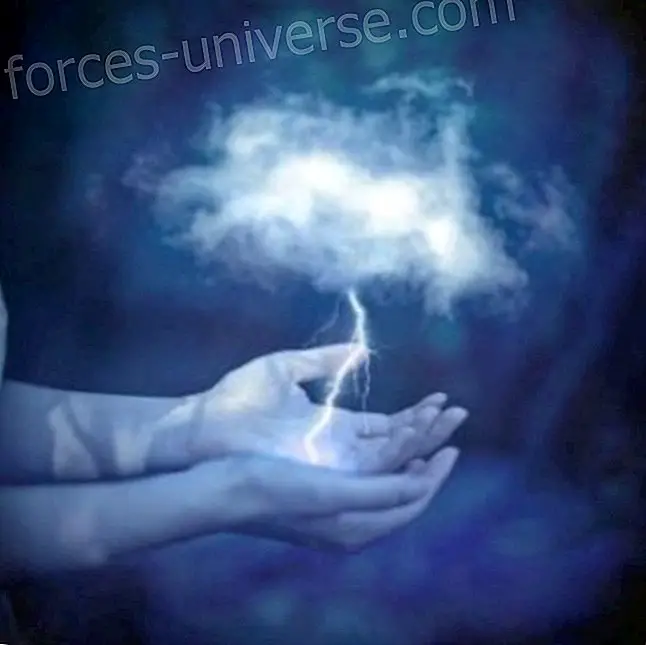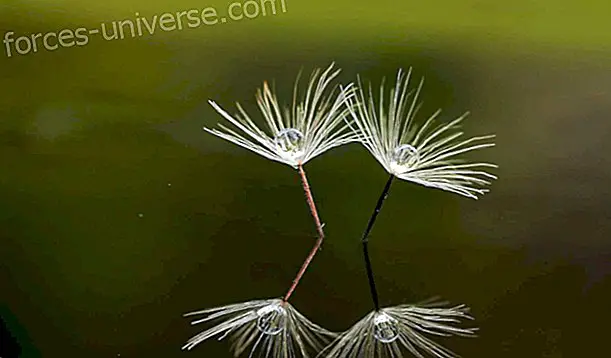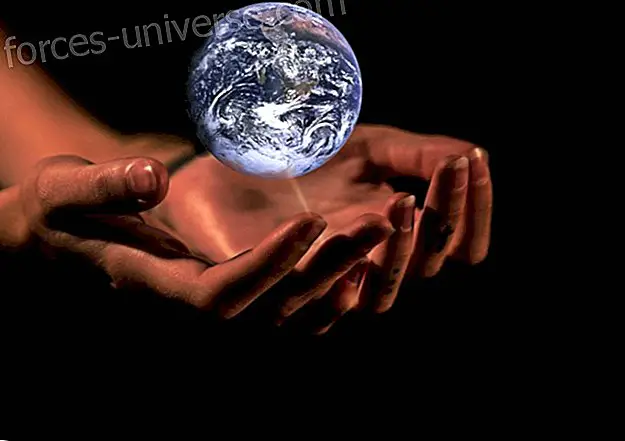
The philosopher of the Sierra Nevada
In this October of the Day of the American Race, Mamo Kuncha, the highest spiritual head of the Sierra Nevada de Santa Marta, emerges in all its dimensions. He is not the defeated or resentful Indian, but the victorious leader who proposes from his mountains a whole philosophy of life, which he has exposed from Bogotá to Washington and Switzerland to businessmen and bankers and strategists and politicians. Wisdom and a new type of leadership.
The butterfly of beautiful colors of augury flew over the bushes and crossed the stream
crystalline and was lost in the forest, between the folds of the mountains, heading to the summits of
the Sierra Nevada de Santa Marta. Gustavo Mutis, renowned business management strategist, the
He watched himself get lost in the distance. Then he heard that behind him Mamo Kuncha said:
“Never chase a butterfly, do not try to catch it, do not run after it, just stay still, wait, because the butterfly is like happiness, not chasing it perches on our shoulders and makes us happy, even for a moment".
Before an audience of 1, 800 people from bankers to national and international businessmen gathered in Bogotá in Expogestión 2009, Mamo Kuncha, head of all the Mamos of the Sierra Nevada de Santa Marta, said: “You have to learn to think slowly. You get things in your ears but you don't listen. They see pictures, they see figures, but they don't talk or listen. You do not see those around you. When you think slowly before doing things, you see everything, everything that is around. You think eagerly and things are badly done. ”
With that wisdom speaks Mamo Kuncha, the great philosopher of the Sierra Nevada. That is the wisdom of Mamo Kuncha and Mamo Jacinto and Mamo Ramón and Mamo Pedro Juan, the wisest among the approximately two hundred spiritual leaders who lead 58, 000 indigenous people who inhabit the Sierra Nevada de Santa Marta, better known as arhuacos, kogis, wiwas and kankwamos. They constitute the only indigenous and deep culture that survives in Colombia, and from their summits and snows that look at the sea they express today the only serious and coherent spiritual approach about a peaceful way of life in harmony with nature and with others. 43 million human beings that inhabit this vast and convulsed territory called Colombia.
The boss of those bosses is called Mamo Kuncha. Maybe he is 65 years old or older. It does not have a cane. He has never worn a pair of shoes. Small, often, with a coppery skin carved by the sun and the wind, it is exaggerated by the size of his clothing of the best raw cotton, the white tutusoma on the head and the mukku or blanket also very white covering in perfect folds his naked body, muscular, body that is like a black rock beneath the snowy peaks.
It is known that he has eighteen children. He is known to live in his karkarwa or ceremonial temple, more than three thousand meters high. It is known that he is the great boss not because he has won that position by votes or by wars but because he is the wisest of all, the one who thinks more deeply and more slowly. He is thinking, meditating, practically since when he was a child under five. When revealing this providential faculty, he was separated and educated without eating salt or meat, in ceremonial temples hidden in the highest peaks of the Sierra, in places so remote that some are even unknown to Juan Mayr, the former Minister of the Environment who is the Colombian who knows and has studied the Sierra Nevada the most, when he discovered it in all its dimensions for Colombians more than thirty years ago.
Mamo Kuncha was practically isolated as a child by his community, from all the forces in conflict on the slopes of the Sierra. He was removed from the missionary priests, the guerrillas, the paramilitaries, the settlers. He does not speak Spanish because he trained in the indigenous language, and his translator is also the indigenous Danilo Villafañe. In fact he speaks very little, keeps long silences. His eloquence is those vast silences with which he sculpts the soundness of his sentences, such as when he states: "The future is to return to the past, " or "We have always existed and will continue to exist forever, because life never dies." His silences are so bizarre and his words so accurate, that he is the most eloquent Colombian in a country where people are a professional opinioner of so many subjects without studying them, to the point that if each one only spoke of what he knows and knows, he would hear Then a great national silence.
Mamo Kuncha met the other Colombia just about ten years ago when he came down from the Sierra Nevada to the hotlands and met the great city. He came down because after thinking in silence for so many years, he and his community and the Council of Mamos decided that it was time to talk with their younger brothers from Colombia and the world to establish a dialogue, to think in groups, to enter into a kind of great negotiation to save the world from destruction, wars, catastrophes, diseases. They believe that the world is rebuilt, it is almost always reinvented after a great crisis, and they know that right now the crisis afflicts all the peoples of the world. The Mamos of the Kogi, Arhuaca and Wiwa cultures decided to draw our attention to alert us, guide us and educate us about the importance of maintaining balance on the planet, calling us to stop our ability to harm, and to warn us about the serious consequences that our actions have on the main force of life.
Mamo Kuncha came down from the Sierra and spoke gently and respectfully to his younger brothers, whom they call so for a sense of affection and respect, and also, even if they don't say so, because they were there, in the Sierra Nevada, which is the highest mountain in the world by the sea, many centuries before the Spanish caravels appeared on the horizon of the ocean. Mamo Kuncha now came down and spoke and led ambassadors, senior United Nations officials, Presidents and political leaders of the world to the Sierra, to teach them greatness and wisdom of their mountains and to force them to stop all the violent people facing death in the sacred territory of the Tayronas. They showed them that they had killed about four hundred indigenous people belonging to the four communities of the Sierra Nevada. I showed them the slopes eroded by the felling of the settlers. I showed them how each year the waters diminished, how the snow receded in the peaks, how Mother Earth whose highest height in the Colombian territory is the Sierra Nevada was threatened there, and to be threatened the Mother was to be threatened all her life, the life that is the waters, the fruits of the earth, the trees, the seeds that travel with the wind
Then Mamo Kuncha continued his dialogue with leaders from Colombia and the world. He spoke in National Geographic documentaries, at the Annual Boston Bioneers Conference, at the Smithsonian Institute in Washington, at the United Nations venues in New York and Geneva, and is already invited to the pr World Economic Forum of Davos, Switzerland. In those forums of intellectuals, scientists, businessmen and bankers, Mamo Kuncha tells how his world works where there are new knowledge centers, where new laws are not enacted every year because the The operation of society is based on laws as unmodifiable as if they were written on stone and that establish everything concerning life and death, such as the law of origin in which the future is the past, the transgenerational law according to which Children will inherit our faults if we do not purify ourselves before the law of the waters that is everything dies, or that which establishes that nothing dies because everything is born, grows and transforms, or that other of life that says that every cycle is always preceded by a crisis.
He also told the powerful of the world, full of riches and ambitions, slaves of cars and bank accounts, that life is short and that one must live it simply in the company of children. He told them that the sacred is not the goods that man buys or builds but the beautiful and deep things that nature lavishes on him. And he told them about the dark and the clear, he pointed out the differences between hearing and listening.
"This is the basis to have peace of mind and joy to live, so that this soul and this body are not lost, although this body is not to last long, instead the soul does not die, " said Mamo Kuncha as if it were the new Zarathustra of Nietzsche, now coming from the summits of the Sierra Nevada. And he spoke in front of executives, businessmen, bankers, businessmen, intelligent and beautiful women, all lovers of life and luxury goods and comfort. "Life is short, very short, you have to make the most of it and share it with your children, " he said to these multitudes of men and women in a rush. They perhaps understood that this barefoot man dressed in white told them of another kind of wisdom, because wisdom is in many places, also in other cultures, not only in laboratories and offices. And that this man often on the outside but of immense inner solidity, also involves another type of Power.
Mamo Kuncha met one day with Alejandro Cirilio Pérez, the most important spiritual leader of all the Mayan Indians of Central America, and recently he was in Sedona, Arizona, the esoteric center of the United States where he met the hundred indigenous spiritual leaders Most important in the world. It is claimed that there too, on a ranch between the red mountains in front of the Grand Canyon of the Colorado, he was meditating with Drunvallo Melquizedec, the great guru of the New Era.
Of course, Mamo Kuncha also knows perfectly what many people are thinking about what is claimed to happen in 2012, starting Friday, December 21 of that year. He spoke twice with Alejandro Cirilio Pérez, the Mayan chief. They say he also talked to Drunvallo Melquizedec. When asked, he enters a long silence. Think slowly, very slowly ... You don't want to speculate or alarm and your dramatic but luminous silence is only interrupted when your translator Danilo Villafañe's cell phone rings. They call Mamo Kuncha from the Sierra Nevada. Speak in arhuaco. When Mamo hangs, think again. And in silence he says that in 2012 there will be no catastrophes, that everything depends on us, but that there will be great transformations, a whole change of consciousness. Maybe a new man ... El Mamo Kuncha and his translator Danilo Villafañe, during his speech at Expogestión 2009 in Bogotá. However, Mamo Kuncha will only come back to this world of younger brothers at the beginning of next year. And then he will go back to his summits in the Sierra Nevada de Santa Marta to think and meditate much further than 2012. To think very slowly there sheltered by the snowy blades that Captain Joseph Conrad saw a hundred years ago from the sea and describe in his monumental work Nostromo in which he recounts everything that can be known about colonial power in the tropics. tropics
Mamo Kuncha is the sage of the Sierra Nevada and the only authentic and deep and non-negotiating thinker that Colombia has.
What will the Koguis say?
By María Jimena Duzán
The Gordian knot of the Santos government has to do with an unfulfilled promise: that the Ministry of Environment would create
Before becoming president, Juan Manuel Santos went to the Sierra Nevada de Santa Marta to perform a ceremony of symbolic possession before the Kogu mamos. There, a necklace of four different quartz was given to the president, representing good governance and society, the fertility of the land, water and air, and the food required by human beings for their livelihood. "You must be the guardian of those four elements, " said the governor of the Kogui council, who is also a Saints - his name is José de los Santos, for more truth. The president accepted the necklace, promised to fulfill that mandate and all the Saints were happy.
We have been more than six months since President Santos declared himself a furious environmentalist before the Kogis, but so far that green speech he promised us is not seen anywhere.
The first erratic act in that matter was precipitated by the winter tragedy. At that time the government went out to say that the only people responsible for the environmental disaster in the country were the autonomous corporations, because they had fallen into corruption and politicking. I do not doubt that this is happening in many of the CARs, but without a doubt they are not the only ones responsible for environmental management. So are the mayors, governors, the Incoder and the Ministry of Environment, which regulates them. With an additional problem: that Ministry ended President Uribe. According to the former Ministers of the Environment Juan Mayr and Manuel Rodríguez, in those eight years he broke up with the environmental institutionality, which had been developed since the Ministry had been created. According to Manuel Rodríguez, the deforestation rate in Colombia tripled in the last ten years, after it had decreased in the 1990s, which demonstrates the weakness of the Ministry when it comes to making itself felt on the environmental issue.
A second negative signal is that 'orangutan' that appeared in the Development Plan, a 'mico' that practically ends the process of granting environmental licenses, created to safeguard the independence that this instrument must have to protect natural resources. According to article 134 of the PND, if after 90 days the Ministry has not given the license, the process would go to a committee in which the minister interested in its approval is represented. For a president who has said that development locomotives have to open up but subject to the issue of environmental sustainability, this article is a major brand contradiction.
With this 'orangutan', environmental licenses could be factored, as in fact was done during the eight years of the Uribe government, in which almost all licenses were accepted, despite the fact that most of them had a negative concept of technical institutes like Invemar and the Humboldt Institute. This happened with the environmental license that gave free access to the port of Dibulla, approved in a sacred place for the Koguis, recognized for its environmental wealth, or that of the port of Palermo, in Barranquilla, granted despite the fact that this is next of one of the most important wetlands in South America that are part of the Ramsar International Convention, which the country adopted to protect them. Something similar has happened with the environmental licenses for the construction of roads that were approved in the Uribe government after having been systematically denied in other governments because they considered that they threatened biodiversity and the balance of nature. That was the case of the Nuquí road or the Darién Tapon road, whose concession was delivered a few hours after the government ended, without any environmental study or consideration. But undoubtedly the Gordian knot of the Santos government has to do with an unfulfilled promise: that the Ministry of Environment would create. Six months have passed and that has not happened. Meanwhile, the Development Plan has been approved and the environmental has lagged behind, in limbo. Not to mention the dispute between the Minister of Housing, Beatriz Uribe, and the high councilor for the Environment, Sandra Bessudo, whose silence before the 'mico' denounced in the Development Plan is incomprehensible.
Or Santos does not have a team that knows how to implement the policy that he promised to the Kogis and the country, or in reality the quartz necklace was just a mirage that never happened.
Biological Resources Research Institute
Alexander von Humboldt
Colombia
Taken from: www.semana.com
WE LOVE Sierra Nevada de Santa Marta
JUAN MAYR
[youtube] http://youtu.be/a_cqiHhSc6Q?t=2s [/ youtube]






